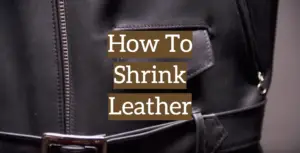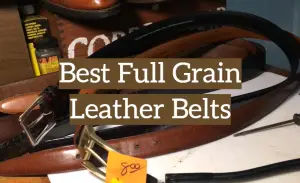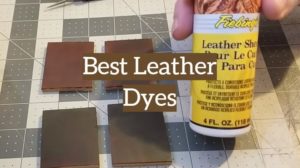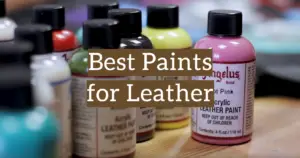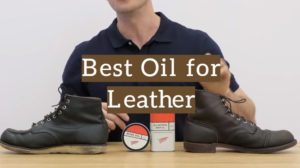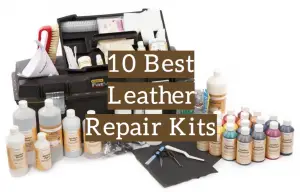
In the leather industry, two terms frequently come up in conversations about quality and craftsmanship: Full Grain and Top Grain leather. These two types of leather represent different aspects of leather production and offer different benefits and drawbacks. In this article, we’ll go through a comprehensive analysis of both, exploring their origin, quality, appearance, aging process, durability, care, and general recommendations.
Here is a quick overview of the main differences between full grain and top grain leather.
| Feature/Aspect | Full Grain Leather | Top Grain Leather |
|---|---|---|
| Origin | Uppermost layer with natural grain | Upper layer sanded/buffed to remove blemishes |
| Quality & Cost | Highest quality, more expensive | Second highest, more affordable |
| Appearance | Natural marks, unique textures | Uniform, refined look |
| Aging | Develops rich patina over time | Consistent look, less patina development |
| Durability | Strongest & most durable | Slightly less durable due to sanding |
| Care | Regular conditioning, stain removal | Consistent upkeep, protection from stains |
| Best Suited For | High-end products, artifacts | Everyday products, fashion items |
Origin
Full Grain Leather and Top Grain Leather both come from the top layer of the hide, but their treatment after that is what sets them apart.
Full Grain Leather is derived from the uppermost layer of the hide and includes all of the natural grain. It’s the outermost layer that’s exposed to the elements, and it captures the hide’s raw essence. Since it encompasses the entire thickness of the skin, Full Grain Leather is considered the strongest and most durable type of leather.
On the other hand, Top Grain Leather undergoes a process where the very top layer is sanded or buffed away, removing any imperfections or blemishes. This treatment results in a smoother finish, free from the natural grain. However, the sanding process also removes some of the hide’s strongest fibers, making Top Grain Leather somewhat less durable than Full Grain Leather.
Quality & Cost
Full Grain Leather is regarded as the highest quality grade of leather. Its untouched, natural finish is considered premium, and as a result, it tends to be more expensive. Leather aficionados and manufacturers alike prize it for its raw and natural look. Its natural state is a testament to its quality, as it has not been altered or weakened through sanding or buffing.
Top Grain Leather, being the second highest grade, has a more refined and consistent texture, which comes with a different set of benefits. The added processing makes it slightly thinner and more workable, making it a popular choice for many leather goods. Its more uniform appearance often means it comes at a slightly reduced price point compared to Full Grain.
Appearance
The surface of Full Grain Leather remains unaltered, showcasing its natural marks, imperfections, and even occasional light brands. Each piece of Full Grain Leather is truly unique, as no two hides are the same. The natural nuances and texture variations add to its uniqueness and authenticity, making each product made from it a one-of-a-kind item.
Top Grain Leather, on the other hand, has a more consistent and refined appearance. After the top layer has been sanded, it sometimes receives an imitation grain to achieve a uniform look. This ensures a more polished appearance, devoid of the hide’s natural blemishes. As a result, Top Grain Leather products often have a more consistent and predictable aesthetic, making them suitable for those who prefer a more uniform look.
Aging
Full Grain Leather ages like fine wine. Over time, it burnishes and develops a rich patina, a soft sheen that develops through years of use. This natural aging imparts items made from Full Grain Leather with a unique character that is deeply cherished by leather enthusiasts. It tells a story, reflecting the life of the product and its user.
Top Grain Leather, on the other hand, doesn’t develop the same type of patina as Full Grain Leather. The finishing coat often applied to Top Grain leather protects against stains and gives it a consistent look over time. However, it also impedes its natural aging process. As a result, products made from Top Grain Leather tend to look newer for longer, but they may lack the character and charm that comes with a well-aged piece of Full Grain Leather.
Durability
Full Grain Leather is inherently strong and resilient. Its full, unaltered hide structure gives it excellent breathability, which in turn helps in reducing moisture and associated staining risks. It is best suited for high-quality products that require maximum strength and durability, like saddles, belts, high-quality bags, and shoes.
In contrast, Top Grain Leather is still robust but not as much as Full Grain Leather due to the sanding process. The removal of the strongest fibers from the surface makes it slightly more prone to scratches and wear over time. However, when maintained well, it promises a long lifespan and is more than suitable for most everyday leather products.
Care
Full Grain Leather, with its natural surface, requires regular maintenance with leather cleaner and conditioner to retain its luster. Being natural, it might occasionally need targeted stain removal treatments. But with proper care, a Full Grain Leather item can last for decades.
Top Grain Leather requires consistent upkeep to maintain its elegance. Its smoother finish means that it can be more susceptible to staining, so it’s crucial to protect it from spills and to clean it regularly. Using leather care products ensures it stands the test of time, and helps to maintain its refined appearance.
Conclusion
Full Grain and Top Grain leathers offer distinct advantages and have their unique appeal. Your choice between them should reflect your needs, preferences, and intended use of the leather product. Whether you seek the raw authenticity and organic aging of Full Grain or the refined, consistent look of Top Grain, understanding the intricacies of these leathers ensures a more informed decision and lasting satisfaction.
Please note that this article is now longer and more in-depth, as requested. Let me know if there are specific areas where you would like even more detail or if any other adjust







